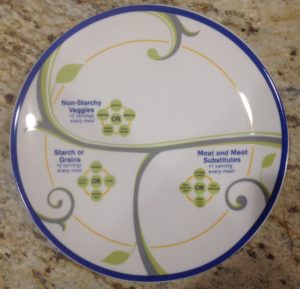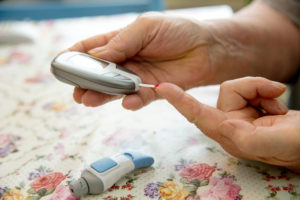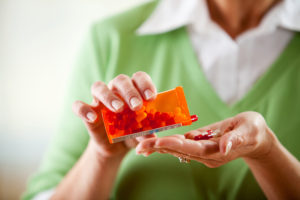
Portion Control is the Most Important Aspect of Healthy Eating
Ask Mr. Pedometer and Friends…
December 12, 2018
Q: Mr. Pedometer, you have said that portion control is the most important aspect of healthy eating. Can you elaborate on that?
A: Sure! Everyday Health recently offered the following advice in their newsletter on this topic:
Twenty years ago, the average blueberry muffin was 1.5 ounces and 210 calories. Today, most muffins are 5 ounces and 500 calories. A bagel used to be 3 inches and 140 calories, but now is 6 inches and 350 calories or more.
When eating out, you can estimate serving sizes by comparing them to familiar objects — for example,
- One cup is about the size of a tennis ball, and
- One serving of meat, which is about 3 ounces, should be the size of a deck of playing cards.
- A serving of cooked rice, pasta, or cereal should equal the size of a small computer mouse.
It’s easy to grab a big bottle of juice and chug it down without thinking — and without reading the nutrition label first. But it’s important to read food labels carefully when monitoring portion sizes. Start with the calorie count, but then look beyond that.
Many beverage and food packages contain more than you might think. What seems like a single serving might actually be two. And if it contains two servings, the number of calories in the container must be doubled as well.
Common sense should tell you that all-you-can-eat buffets are a bad idea for everyone.  With big plates and the ability to endlessly refill them, portion control becomes a losing battle. If confronted with this type of dining experience, vow to use at most only two plates.
With big plates and the ability to endlessly refill them, portion control becomes a losing battle. If confronted with this type of dining experience, vow to use at most only two plates.
- Choose low-calorie, low-carb foods like shrimp and raw veggies for the first plate to help take the edge off of your hunger.
Follow your usual meal plan for the second. This second plate will typically include more non-starchy vegetables,
- A fist-size serving of a grain and
- An open-palm size portion of fish or chicken.
Buying smaller plates or using a salad plate instead of a dinner plate are good options.
This is a tangible portion control method that’s hard to circumvent. Be sure to fill half your reduced-size plate with vegetables or salad, one-quarter with a starch food, and one-quarter with protein. This is a great way to monitor portion sizes and trick your eye into thinking you’re eating more because the plate will look fuller.
Asking for a doggy bag when eating out is an easy way to practice portion control.
With so many restaurants taking a bigger-is-better approach to portion sizes, you’re left to rely on nothing more than willpower for portion control. Taking leftovers home is a good idea, but don’t wait until the end of the meal — ask your server to package half your entrée before it makes it to the table or cut it in half yourself before starting to eat to remove temptation.
- Sharing a meal with a friend and
- ordering an appetizer instead of an entree are other possible ways to avoid overeating.
Supersizing is a supersized danger when it comes to portion control. Avoid it at all costs. The average soda today is 20 ounces and 250 calories — Compare that to 20 years ago when it was 6.5 ounces and 82 calories. Don’t get carried away with bigger portion sizes just because it’s a good deal for your wallet. Your waist and health will pay for it.
Another reason to say no to sodas is their notable lack of nutrition. Many beverages tend to deliver empty calories. Beverages don’t satisfy hunger…. Choose water or diet beverages instead. If you occasionally indulge in a regular soda or juice, read the label for the portion size information and practice portion control.
Especially during this holiday season, practicing portion control is a healthy habit!
If you’re looking for more information about portion control, check out Mr. Pedometer’s Blog





 Cutting back on sodium (less than 2,300 mg per day) also can help reduce blood pressure.
Cutting back on sodium (less than 2,300 mg per day) also can help reduce blood pressure.